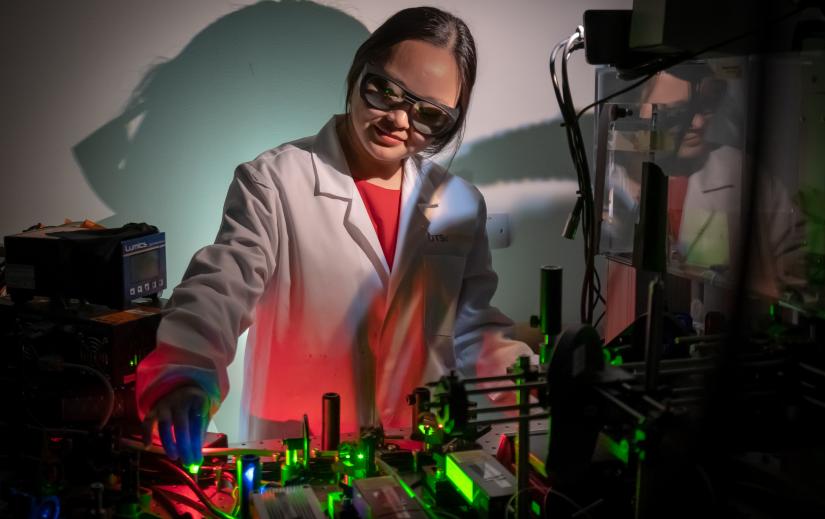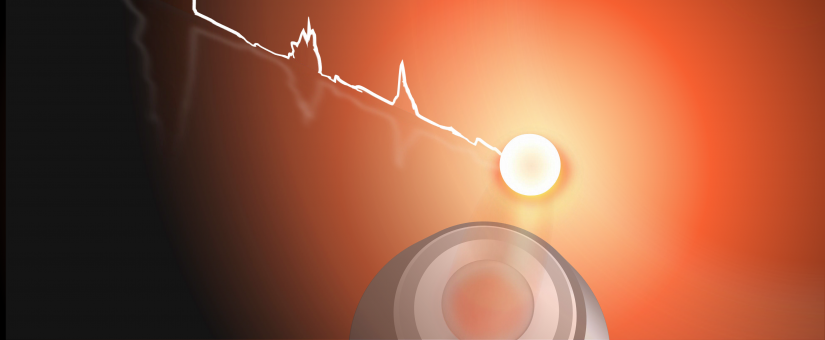
Dr Jiajia Zhou from UTS IBMD, specialises in building single particle optical spectroscopy to uncover the more unpredictable behaviour of nanoparticles.
Modern society is working closer to the nanoscale than it realises. Breakthroughs and advances in developing and manipulating nanostructures have led to technological progress that not only drives imaging and sensing devices but also makes possible mainstays of modern life such as touch screens and high resolution LED displays.
A new review authored by international leaders in their field, and published in Nature, focuses on the luminescent nanoparticles at the heart of many advances and the opportunities and challenges for these technologies to reach their full potential.
Senior author, Professor Dayong Jin, says that by trying to understand how single nanoparticles behave scientists are asking very fundamental questions to develop tools that can be used to realise technological breakthroughs in diverse areas including personalised medicine, cyber security and quantum communication.
“The purpose of this field is to really understand the properties of these artificial atoms so that their properties can be controlled and tailored for the application we need,” he says. Professor Jin is the Director of the University of Technology Sydney (UTS) Institute for Biomedical Materials & Devices (IBMD) and director of UTS-SUStech Joint Research Centre for Biomedical Materials & Devices.

Understanding how single nanoparticles behave is leading to in personalised medicine, cyber security and quantum communication. Image credit: JiaJia Zhou.
The paper charts the rise of single molecule measurements and the rapid progress in optical microscopy that made it possible to ‘see’ the fluorescence of single photons and, thereby, the discovery of the underlying photophysics of the nanoscale. From quantum dots to carbon dots, fluorescent nanodiamonds and nanoparticles fabricated from obscure minerals such as perovskite – all promising tools for applications as diverse as imaging, biomarker detection and data storage.
But as the authors admit, “the closer we pursue the perfection in nanoparticle design, the harder the challenges become”.
Lead author Dr Jiajia Zhou from UTS IBMD, who specialises in building single particle optical spectroscopy to uncover the more unpredictable behaviour of nanoparticles, says that there is demand for smaller and more efficient nanoparticles with new desirable functions and characteristics.
“Especially for biomedical and intracellular applications such as molecular probes and sensors. Here we are talking about only a few nanometers in size where the challenge in forming uniform nanoparticles and controlling their shape, size and optical properties requires new knowledge about nanoparticle surface chemistry, for example,” she says.
Still, in a very fast moving field the potential seems only to be limited by scientific imagination and, more likely, the ability of scientific and engineering disciplines to integrate knowledge and skills, the authors say.
“This paper is a large survey and highlights the need for a global effort and resources towards the fundamental research needed to keep pushing the boundaries of what is possible at the nanoscale, so society can benefit from the many emerging opportunities,” Professor Jin says.
Professor Jin imagines a world where nanoscale tweezing is used to assemble hybrid nanoparticle- based devices and where biomedical signatures can be used to answer questions around an individual’s response to drug therapies, all from one drop of blood.
“Everyday when people enjoy using smartphones and touch screens to send messages, and high resolution screen displays to view images and watch videos, they might forget where this technology comes from.
“These technologies may look like engineering projects but really they are the result of decades of research from scientists and students working ‘in the dark’ to answer fundamental questions about how nature works at the smallest of scales,” he said.
Co-authors include Dr Alexey Chizhik from University of Gottingen and Nobel Laureate Professor Steven Chu from Stanford University.
Acknowledgements:
Australian Research Council, Australia China Science and research Fund Joint Research Centre for Point of Care Testing, Shenzhen Science and Technology Program.
Publication:
Single particle spectroscopy for functional nanomaterials
Jiajia Zhou, Alexey I. Chizhik, Steven Chu, Dayong Jin
Nature 2020

